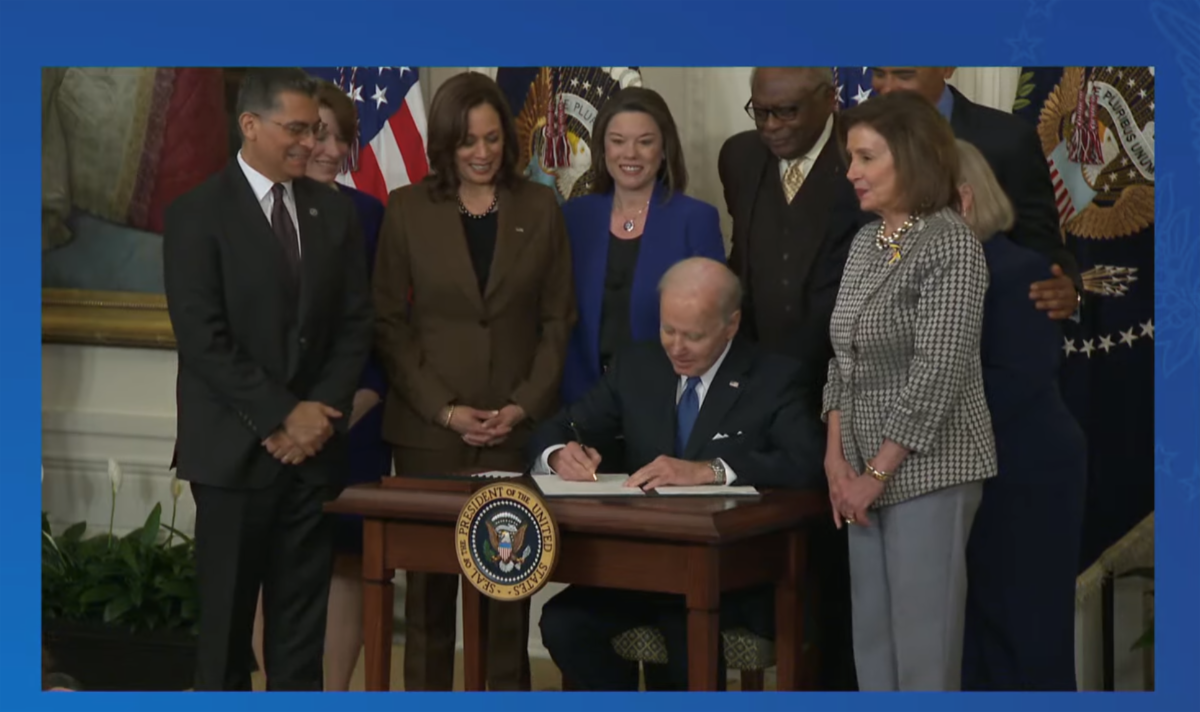
- Details
- By Kelsey Turner
President Biden signed an executive order Apr. 5 directing federal agencies responsible for administering Medicaid and the Affordable Care Act to “identify ways to continue to expand the availability of affordable health coverage.” The order is a followup to his January 2021 order that led to enrolling 14.5 million people in Affordable Care Act coverage, extending Medicaid coverage for pregnant women until a year after the baby is born, and proposing rules to fix a regulatory gap in the ACA known as the “family glitch” that prevents family members from accessing subsidies despite high premiums for coverage through an employer.
National Indian Health Board (NIHB) Vice Chairman Nickolaus Lewis (Lummi Nation Tribal Council) and NIHB CEO Stacy A. Bohlen (Sault Ste. Marie Chippewa) attended the order’s signing ceremony, along with former President Barack Obama and Vice President Kamala Harris. When the ACA was passed in 2010, the NIHB successfully fought to get several Indian-specific provisions included, such as permanent reauthorization of the Indian Health Care Improvement Act (IHCIA).
“This wasn’t an easy task to get this point of being the law that it is today,” Lewis said in an NIHB press release. “But due to the hard work of so many across this country, it is the law, and we raise our hands to President Biden for continuing to do what’s right in protecting and advancing health-care rights in our country, especially Indian country.”
The ACA gives American Indians and Alaska Natives several options for health-care coverage. Native people have the choice to continue using the Indian Health Service, tribal or urban Indian health programs, or buy a qualified private health-coverage plan through the ACA’s Health Insurance Marketplace. If eligible, they can enroll in Medicare, Medicaid, or the Children’s Health Insurance Program.
In the first eight years after the ACA was enacted in 2010, the rate of uninsured AI/AN people under age 65 decreased from 44% to 28%, according to data compiled by the Department of Health and Human Services’ Office of the Assistant Secretary for Planning and Evaluation. “This law ultimately contributed to roughly 300,000 AI/ANs obtaining health coverage by 2020,” the NIHB says.
Still, Native people continue to have the highest uninsured rate of any major ethnic group, at 22%, according to data from the Census Bureau’s 2019 American Community Survey. The rate was above 30% in parts of the Navajo Nation in Arizona and New Mexico.
“With today’s executive order, we acknowledge that the work isn’t yet done, but this important step makes health care accessible to even more Americans,” Lewis said. “It’s continuing to take another step in the right direction of improvement, while we work together in a bipartisan manner to improve both the ACA and the IHCIA for the betterment of our loved ones who rely on it for their life-saving health care.”
The NIHB provides educational materials on protections and provisions for AI/ANs through Medicaid, CHIP, and the Health Insurance Marketplace here. You can learn more about the Health Insurance Marketplace benefits for AI/ANs here.
More Stories Like This
HHS Repeals Nursing Home Staffing Requirements, Citing Relief for Tribal FacilitiesNative Americans Face Second-Highest Gun Death Rate in U.S., New Study Shows
National Council of Urban Indian Health Encourages Vaccinations
New Native Nations Center for Tribal Policy Research Analyst Will Examine Cancer Disparities in Oklahoma Tribes
Republicans Left Tribes Out of Their $50B Rural Fund. Now It’s Up to States To Share.

